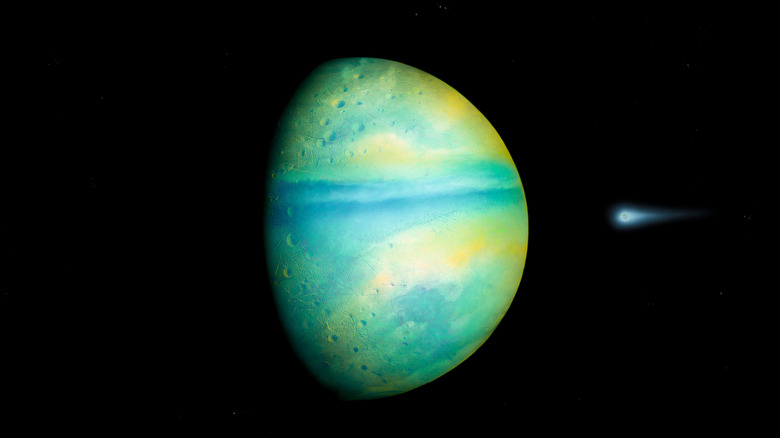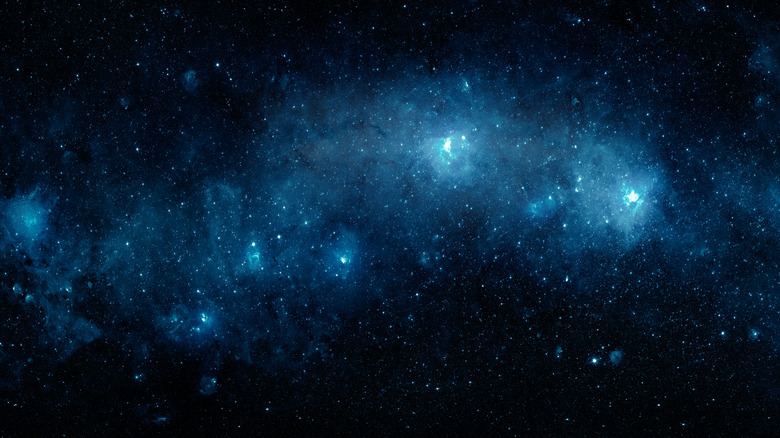What Is An Exoplanet?
The scientific community was abuzz in late October 2021 when it was announced that there was the possibility that a planet the size of Saturn may have been located in the Whirlpool Galaxy, a neighboring galaxy that is 28 million light-years away, per PBS. There will have to be more confirmation to prove that this is the case, but they were comfortable enough with the preliminary findings to allow this news to come out. If it was true, it would mark the first time that they found a planet that was not in our home galaxy, the Milky Way. The term that they used to describe this Saturn-sized planet was "exoplanet."
This may lead people to wonder exactly what an exoplanet is. It's actually quite simple. In short, an exoplanet is one that orbits around a star that is not our sun, per NASA. The next question is: How do they go about finding these exoplanets?
Astronomers look for something affecting a star
As advanced as telescopes have become, especially those that are orbiting the Earth, like the Hubble Telescope and the soon-to-be launched James Webb Space Telescope, they cannot zero in on a star and get details about what is orbiting around it. So scientists have to use other methods. They look at a star and see if there is anything that makes it look wobbly. A planet will pull on the star and cause its orbit to look different. An X-ray telescope may be of great use here — it helped with the Whirlpool Galaxy find, per PBS. If a scientist sees that "wobble" and verifies it repeatedly, then chances are good that they are seeing an exoplanet, via NASA.
What problems are there? Well, first of all, it can take planets a long time to orbit these stars. Also, these stars are very far away. The possible exoplanet in the Whirlpool Galaxy is 28 million light-years away, for example. So people will have to be patient. The answer may not be immediate, but hopefully one day in the not-so-distant future, more and more exoplanets may be confirmed as being found.
Our own galaxy has an estimate 100,000 million stars alone, according to the European Space Agency, and there is a good chance that we will find more exoplanets in the Milky Way as well as other galaxies. All we have to do is keep looking up.

